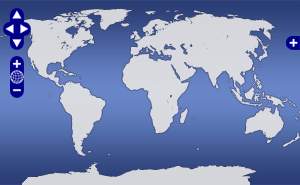FKt240524 Dive Information
SOI Data Manager,
Investigator
Platform
SuBastian
ROV
Dive Information
Devices
Related Data Sets
Dive Information
Total Dive Count: 7
Events
S0678
Start
2024-05-31T10:52:35.966
Locale
NotProvided
NotApplicable
Stop
2024-05-31T23:21:38.104
Nav Type
DVL/USBL/INS
Details
"Living fossil" brachiopods and mollusks such as Neopilina and Leptochiton were reported at Site 9fromnet casts. Our plan is to explore this area to uncover interesting biological and geological features. We will take push cores and water samples for microbiological, geological, and biogeochemical analyses. Additionally, geologists aim to collect distinct types of rocks for further study.
If we encounter Cnidaria, or mollusks, we will use the suction sampler to collect specimens. Sediments will be scooped for both biological and geological sampling. Nikolas, who is particularly interested inmidwater fauna (primarily Cnidarians but also fish), will participate in both the descent and ascent phases of the exploration.
Nikolas will attend the descent to search for midwater fauna and collect animal samples if possible. Onthe seafloor, our focus will be on identifying benthic communities, brachiopods, microbial mats, andnotable geological features. We will collect push cores, sediment scoops, rock samples, water samples, invertebrates, fish, and any anthropogenic debris. During the ascent, we will continue to observe andsample midwater fauna, using the suction samplers if space allows.
S0679
Start
2024-06-01T10:37:48
Locale
NotProvided
NotApplicable
Stop
2024-06-02T01:44:42.126
Nav Type
DVL/USBL/INS
Details
The main focus of this dive is to cover a larger area in search of methane seeps. Seepage areas have been detected along the continental slope of Chile, typically along fault lines and anticlines. Our plan is to explore the ridge area in search of seeps and associated communities, such as microbial mats and specific species of clams and tubeworms. The geologists on our team are also interested in the rocks, as the dive will cross at least one fault line in the convergence zone.
We will begin in a relatively flat area where the bottom profile indicated significant sediment deposition. In this region, we might encounter "false seeps," which are seeps associated with large amounts of organic matter deposition. If we do not find seeps here, we will head west along a fault line and up towards the ridge, where we expect to collect rock samples and possibly push cores for microbiological sampling. Depending on the environment around Waypoint 006 on the upper ridge, we will decide whether to continue up the ridge (Waypoint 006-1) or proceed along the fault line towards Waypoint 007.
S0680
Start
2024-06-02T11:49:58.044
Locale
NotProvided
NotApplicable
Stop
2024-06-03T00:42:48.498
Nav Type
DVL/USBL/INS
Details
Upwelling site to be investigated
S0681
Start
2024-06-03T08:46:49.273
Locale
NotProvided
NotApplicable
Stop
2024-06-04T14:30:28.282
Nav Type
DVL/USBL/INS
Details
The main focus of this dive is to cover a larger area in search of methane seeps. Seepage areas have been detected along the continental slope of Chile, typically along fault lines and anticlines. Our plan is to explore the ridge area in search of seeps and associated communities, such as microbial mats and specific species of clams and tubeworms. After discussions with experts on methane seepages in Chile, we chose waypoints that lead us across geological features that could potentially harbor seeps. We will start the dive in the deepest point, on the “smooth slope” of the continental margin that collaborating geologists identified as a potential region of interest from the acquired bathymetry. In this region, we might also encounter "false seeps," which are seeps associated with large amounts of organic matter deposition.
If we do not find seeps here, we will head west along a fault line and up towards the ridge along the waypoints.
S0682
Start
2024-06-04T17:31:36.13
Locale
NotProvided
NotApplicable
Stop
2024-06-05T00:31:36.252
Nav Type
DVL/USBL/INS
Details
The main focus of this dive is to investigate an area that we identified as a region of interest from the backscatter data. We found methane seeps on the last dive in a similar geological setting along fault lines and aim to compare these to this shallower dive site closer to shore . Since we extended last night’s exploratory dive in search of larger methane seepages, this will be a short dive and we likely won’t go past waypoint 5 or 6, depending on the findings at the first waypoints. We will explore the area in search of seeps and associated communities, such as microbial mats and specific species of clams and tubeworms.
The primary objective is to search the fault lines for methane seeps and collect samples (push cores, water, rock, and animal samples) at seepage sites.
The macrobenthos group won’t be taking samples during this exploratory dive unless methane seeps are
found.
S0683
Start
2024-06-05T03:47:36.255
Locale
NotProvided
NotApplicable
Stop
2024-06-06T02:19:04.303
Nav Type
DVL/USBL/INS
Details
The idea is to continue in the search for ancient benthic ecosystems so we can sample them intensively and then move to other areas along the maximum depth. The fact that phylogenetically distant species (Leptochiton macleani and Neopilina sp.) have been found by chance close to Site 7 (23°50'6''S, 71°06'7''W) suggests that such ancient species are rather common in this area. We will be looking for Brachiopods, Crinoids, other deep-sea echibnidermata, and crustaceans, as well as other interesting specimens and biofilms. These depths are also compatible with the presence of hydrate methane ice
S0684
Start
2024-06-06T05:09:23.243
Locale
NotProvided
NotApplicable
Stop
2024-06-06T11:45:11.653
Nav Type
DVL/USBL/INS
Details
We will return to two of the methane seep sites from dive S0681 to replace the samples, which includes one push core from each site (we will take 2 additional ones in case they fail), a Crinoid and a sponge. If time allows, we will continue to the rest of the waypoints or follow the topography on the ridge where we found the seeps. If we see any larger seepage sites, or seeps with different species, we will take push core and specimen samples for Dr. Pete Girguis, 2 of each.
Expand

 Map View
Map View
